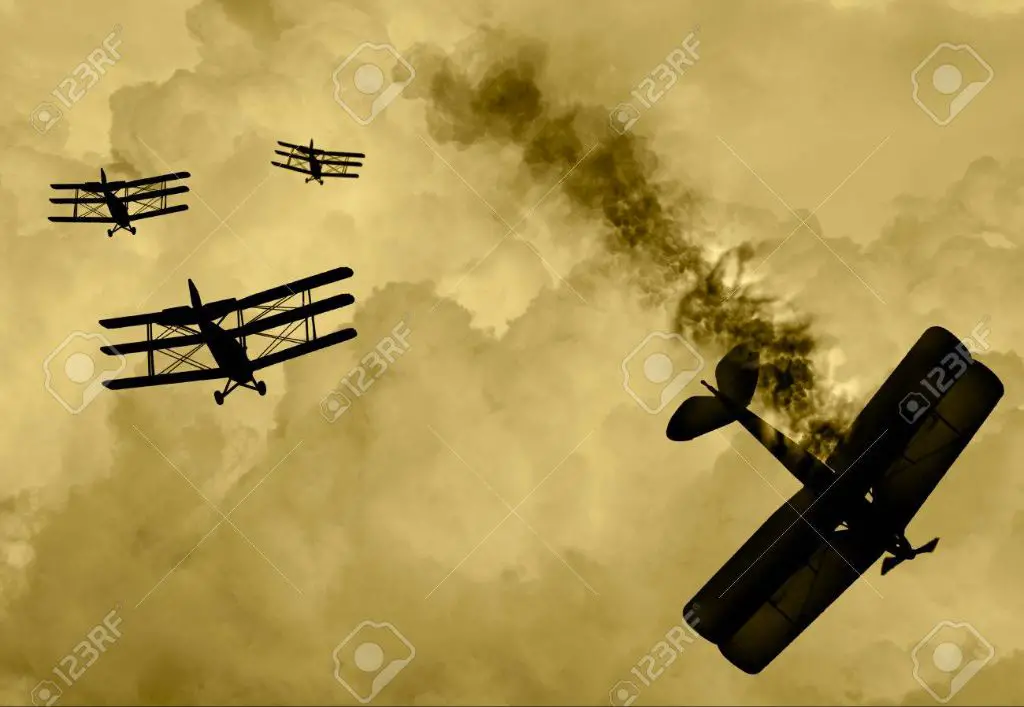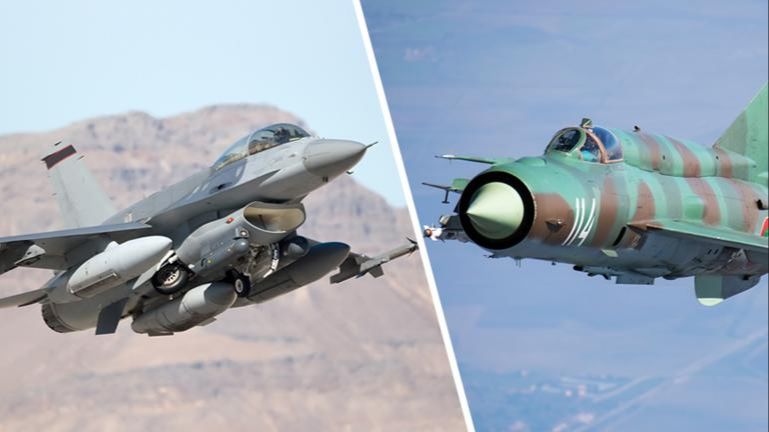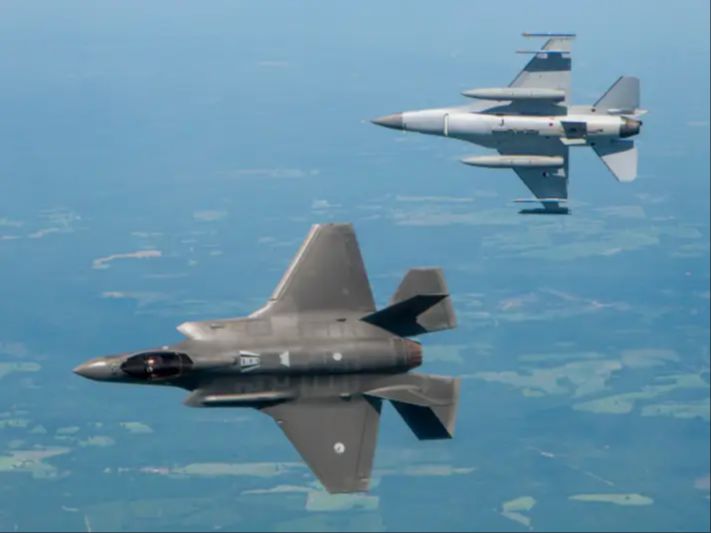Introduction
A dogfight is an aerial battle between fighter aircraft conducted at close range. Dogfighting first emerged during World War I as opposing pilots engaged in air-to-air combat, attempting to shoot down each other’s aircraft. The term “dogfight” originated from pilots comparing the frenzied maneuvers during aerial combat to a dog fight.
The advent of the synchronized machine gun in 1915 marked the beginning of purpose-built fighter planes designed for aerial combat. During World War I, dogfighting tactics focused on getting behind or above the enemy to deliver a stream of bullets from mounted guns. The development of monoplane fighters in the 1930s increased maneuverability and speed, ushering in the era of the classic dogfight between opposing single-engine propeller planes.

Dogfighting dominated aerial combat through World War II, reaching its peak during the Battle of Britain in 1940. The superior speed and armament of jet fighters in the 1950s and guided missiles in the 1960s began to diminish the importance of traditional dogfighting skills. While no longer the main form of air combat, close-range aerial dogfights still occasionally occurred in conflicts after WWII. The last known dogfight took place during the Kosovo War in 1999 between a United States F-15 Eagle and a Serbian MiG-29.
World War II Dogfights
Some of the most famous dogfights in history occurred during World War II. The Battle of Britain in 1940 saw British Spitfires and Hurricanes take on German Bf 109s and FW 190s in the skies over England. The superiority of the Spitfire helped the Royal Air Force defeat the German Luftwaffe in the battle for air supremacy, preventing a German invasion of Britain.
Later in the war, American P-51 Mustangs engaged German fighters in intense air battles over occupied Europe and Germany itself. The long-range P-51 was able to escort Allied bombers deep into enemy territory. The Allies gained control of the skies, allowing their bombers to strike targets across Germany and paving the way for the D-Day invasions.
In the Pacific Theater, American F4F Wildcats and F6F Hellcats battled Japanese Zeros and other fighters. The F6F proved superior to the nimble but lightly armored Zero and helped the U.S. gain air superiority. Fierce dogfights occurred near islands like Guadalcanal as both sides vied for control of the Pacific skies.
Korean War Dogfights
The Korean War marked a major transition in aerial combat from propeller-driven planes to jet aircraft. At the start of the war in 1950, piston-engine fighters like the Soviet Yak-9 and American F-51 Mustang were the norm. However, jets soon entered the fray with the Soviet MiG-15 and American F-86 Sabre.
These early jets were much faster and could climb quicker than propeller planes, but they also faced some limitations. The shift to jet engines meant pilots had to adapt to new aerodynamic properties and throttle controls. Machine guns were less accurate at high speeds, making dogfighting more challenging. The MiG’s swept-wing design gave it an advantage in high-speed maneuverability over the Sabre’s straight wings.

By 1951, jet vs jet dogfights were increasingly common over “MiG Alley.” American pilots had to rely on the Sabre’s superior dive speed and low-speed handling to compete with the MiG-15. The conflict saw rapid improvements in jets and the refinement of jet dogfighting tactics. The sweeping aerial duels between these early jets were a harbinger of the jet age to come.
Vietnam War Dogfights
The Vietnam War saw extensive use of air power by the United States and extensive dogfighting between American and North Vietnamese fighters. Advances in missile technology began to reduce the importance of cannons and gun-based dogfighting at this time. The primary American fighter was the F-4 Phantom II, which relied on missiles and lacked an internal cannon. The North Vietnamese flew Soviet-made MiG fighters, such as the nimble MiG-21, which had both missiles and a cannon. The lack of a gun on the Phantom was a handicap in close-range dogfights against the MiGs over North Vietnam. As a result, the Phantom had an unfavorable loss record in air-to-air combat, with 240 losses to MiG fighters.
To address this, some Phantoms were fitted with an external gun pod called the “SUU-16” which gave it a cannon armament. The most successful American dogfighting pilot of the war, Colonel Robin Olds, devised air combat tactics to use the Phantom’s superior radar, speed, and missile capabilities to best engage the enemy MiGs. This included the Lufbery circle defensive maneuver, combined with pre-planned timing, speed, surprise and teamwork to allow missile attacks on MiGs as they finished attacking other Phantoms exiting from a Lufbery circle. This tactic helped American pilots achieve more favorable results despite their aircraft limitations. The advances in missiles during the Vietnam War foreshadowed the increasingly complex beyond-visual-range air combat that would emerge in later decades.
Arab-Israeli Conflicts
In the main Arab-Israeli wars that involved air combat, there were numerous dogfights between Israeli, Egyptian, Syrian, Jordanian and Iraqi fighter pilots. The major wars that featured aerial dogfighting include:
– The 1948 Arab-Israeli War, which followed the establishment of Israel, involved some limited air combat between Israeli, Egyptian and Royal Iraqi Air Force planes. This included dogfighting between Israeli Avia S-199s and Egyptian Spitfires.
– The Suez Crisis of 1956 saw extensive Israeli Air Force dogfighting against Egyptian planes, with Israel obtaining air superiority early on. Numerous dogfights occurred as Israel struck Egyptian airbases.
– The Six-Day War of 1967 was dominated by the Israeli Air Force, which decimated Arab air forces in preemptive strikes. In intense dogfights, Israel downed over 400 enemy planes with minimal losses.
– The War of Attrition from 1967-1970 involved Israeli and Egyptian pilots constantly engaged in dogfights over the Suez Canal. Egypt’s Soviet fighters posed a new challenge to Israel.
– The Yom Kippur War of 1973 saw formidable Arab surface-to-air missiles limiting Israeli dogfighting early on. However, Israel eventually regained air superiority in intense dogfights over the Golan Heights and Sinai.
– The 1982 Lebanon War pitted Israeli pilots against Syrian jets, resulting in over 80 Syrian planes downed in dogfights without any Israeli losses.
India-Pakistan Dogfights
India and Pakistan have been bitter rivals since splitting with the partition of India in 1947. The dispute over control of the Kashmir region has sparked several wars and sustained tensions between the neighboring countries. This has also resulted in numerous dogfight encounters between their air forces over the decades:
In the Indo-Pakistani War of 1965, dogfights erupted over Kashmir as Indian and Pakistani fighter jets engaged each other. Both sides flew comparable aircraft like the British Hawker Hunter, French Dassault Ouragan, and American F-86 Sabres. India claimed victory, destroying 29 Pakistani aircraft while losing 19 of their own planes. The war ended in stalemate though with no permanent territorial changes.
During the Indo-Pakistani War of 1971, dogfights occurred as India intervened to support the independence movement in East Pakistan. The Indian Air Force, flying MiG-21s, Gnats, and Hunters, dominated the skies against Pakistani Sabres, Mirages, and F-6s. India destroyed 94 Pakistani aircraft, losing just 29 of their own. This allowed India to make major gains on the ground, leading to the creation of Bangladesh.

In the 1999 Kargil War, triggered by Pakistani intrusions into Indian Kashmir, the Indian Air Force responded with strikes against the infiltrators. Dogfights erupted as Pakistan scrambled F-16 and Mirage III jets to counter the MiG-21s, MiG-27s, and MiG-29s of India. Each side lost aircraft during these confrontations, but India ultimately prevailed in repelling the Pakistani incursions.
Sporadic dogfight skirmishes have occurred even during peacetime, as tensions remain high between the nuclear-armed neighbors over Kashmir and other issues. Both India and Pakistan continue developing their air power, ensuring future conflicts will likely see fierce aerial combat between some of the world’s largest air forces.
Falklands War
The Falklands War in 1982 saw significant air combat between the United Kingdom and Argentina over the disputed Falkland Islands in the South Atlantic. Both sides utilized jet fighters, with the British fielding the Sea Harriers and the Argentines flying French-made Super Étendards, Mirage IIIs and Mirage Vs.
On May 1, British Sea Harriers engaged Argentine Mirages and shot down 3 aircraft with no losses. Further dogfights occurred over the following days as the British attempted to gain air superiority. On May 4, two Sea Harriers downed 3 Argentine aircraft. Intense air battles took place on May 21 when Harriers and Sea Harriers intercepted an Argentine strike package, resulting in 11 Argentine aircraft destroyed.
The decisive British victory in the air campaign was critical to their recapture of the Falklands. Advanced British radars, air-to-air missiles and the skill of their pilots outmatched the Argentine Air Force. The last major dogfight occurred on June 8 when Harriers downed 2 Mirages. Sporadic engagements persisted until the end of the war that month. The Falklands War represented one of the final large-scale aerial combat engagements between jet fighters.
Persian Gulf War Dogfights

During the Persian Gulf War in early 1991, Coalition aircraft engaged the Iraqi Air Force in numerous air-to-air combats. The modern fighter jets of the Coalition, such as the F-15 Eagle, F-14 Tomcat and F/A-18 Hornet, vastly outmatched the primarily Soviet-built aircraft of the Iraqis. The Coalition’s technological and training superiority led to a lopsided air war, with the Iraqis losing dozens of aircraft in dogfights while the Coalition suffered no air-to-air losses.
On the first day of Desert Storm on January 17, 1991, F-15 Eagles of the USAF downed two Iraqi MiG-29 fighters. Over the next few days, Coalition fighters shot down several more Iraqi jets, including Su-22s, Mirage F1s and MiG-23s. By January 19, the Iraqi Air Force had already lost over 50 aircraft, most while trying to engage Coalition fighters.
The Iraqi pilots were relatively inexperienced and no match for Coalition aces. Attempts by the Iraqi Air Force to target high-value Coalition aerial assets failed. An encounter on January 19 saw two F-15Cs take out two Mirage F1s that were seeking to target American AWACS aircraft. The last known Iraqi dogfight occurred on February 27, when an F-16C downed a MiG-23. When the Persian Gulf War ended, the Coalition had destroyed over 300 Iraqi aircraft, while not losing a single plane in air combat. The lopsided result highlighted the superiority of Coalition pilots and modern Western fighter jets.
Kosovo War
The Kosovo War between NATO and Yugoslavia in 1999 marked what historians consider as the last known dogfights over Europe. Tensions had been rising in the province of Kosovo between ethnic Albanians and Serbians. This prompted NATO to intervene with a bombing campaign targeting Yugoslav forces. In response, Yugoslavia deployed MiG-29 and MiG-21 fighters to engage NATO aircraft. On March 24, an American F-15C shot down a Yugoslav MiG-29 with an AIM-120 AMRAAM missile near Urosevac. A few weeks later on May 4, a Dutch F-16AM destroyed another MiG-29 with an AIM-120 missile. These represented the first combat losses ever for the MiG-29. Several other dogfights occurred during the 78-day campaign, with NATO pilots ultimately achieving air superiority. The dogfights over Kosovo signified the last major aerial battles between jet fighters over the European continent.
Conclusion
As aviation technology advanced throughout the 20th century, the nature of aerial combat evolved dramatically. The daring dogfights of World War I and II, fought at close range with machine guns and cannons, gave way to beyond-visual-range missile engagements and stealth technology. Dogfighting never fully disappeared, but steadily declined as a share of air combat. Future prospects for close-in dogfighting are mixed. Some analysts argue that stealth, sensors and long-range weapons make dogfighting obsolete. However, others contend that dogfighting skills will remain relevant, as sensors can’t replicate the fluidity and adaptability of human pilots. The finale of the Top Gun sequel suggests that even in a high-tech future, the thrill of the dogfight lives on. While the days of large-scale aerial melees may be over, the human factor ensures dogfighting will likely persist in some form as long as we have pilots in cockpits.